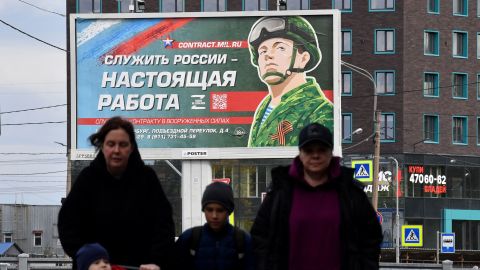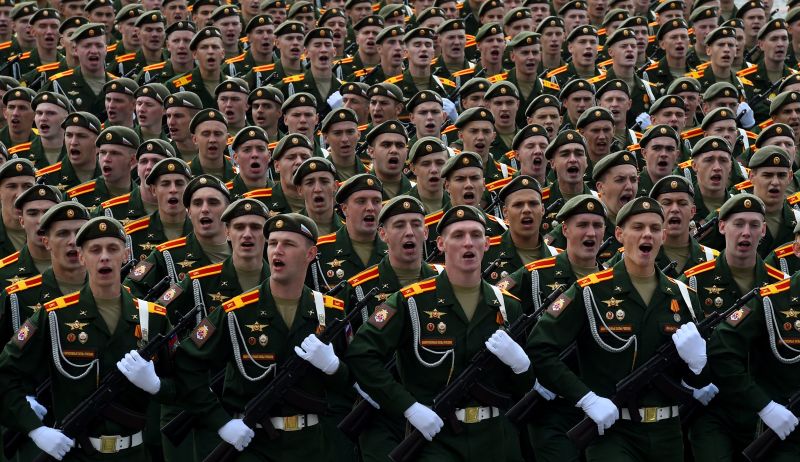CNN
—
Vladimir Putin can call up all the troops he wants, but Russia has no way of getting those new troops the training and weapons they need to fight in Ukraine any time soon.
With his invasion of Ukraine faltering badly, the Russian President on Wednesday announced the immediate “partial mobilization” of Russian citizens. Defense Minister Sergei Shoigu said on Russian television that the country will call up 300,000 reservists.
If they end up facing Ukrainian guns on the front lines, they are likely to become the newest casualties in the invasion Putin started more than seven months ago and that has seen the Russian military fail at almost every aspect of modern war.
“The Russian military is not currently equipped to rapidly and effectively deploy 300,000 reservists,” said Alex Lord, Europe and Eurasia specialist at the Sibylline strategic analysis firm in London.
“Russia is already struggling to effectively equip its professional forces in Ukraine, following significant equipment losses during the war,” Lord said.
The recent Ukrainian offensive, which has seen Kyiv recapture thousands of square meters of territory, has taken a significant toll.
The Institute for the Study of War earlier this week said analysis from Western experts and Ukrainian intelligence found Russia had lost 50% to 90% of its strength in some units due to that offensive, and vast amounts of armor.
And that comes on top of staggering equipment losses over the course of the war.
The open source intelligence website Oryx, using only losses confirmed by photographic or video evidence, has found Russian forces have lost more than 6,300 vehicles, including 1,168 tanks, since the fighting began.
“In practice, they don’t have enough modern equipment … for that many new troops,” said Jakub Janovsky, a military analyst who contributes to the Oryx blog.
JT Crump, CEO of Sibylline and a veteran of 20 years in the British military, said Russia is beginning to suffer ammunition shortages in some calibers and is looking for sources of key components so it can repair or build replacements for weapons lost on the battlefield.
It’s not just tanks and armored personnel carriers that have been lost.
In many cases, Russian troops haven’t had the basics in Ukraine, including a clear definition of what they are risking their lives for.
Despite Wednesday’s mobilization order, Putin is still calling Ukraine a “special military operation,” not a war.
Ukrainian soldiers know they are fighting for their homeland. Many Russian soldiers have no idea why they are in Ukraine.
Lithuanian Foreign Minister Gabrielius Landsbergis noted this on Wednesday, calling Putin’s partial mobilization announcement “a sign of desperation.”

“I think that people definitely do not want to go to a war that they do not understand. … People would be taken to jail if they were to call Russia’s war in Ukraine a war, and now suddenly they have to go in and fight it unprepared, without weapons, without body armor, without helmets,” he said.
But even if they did have all the equipment, weapons and motivation they need, getting 300,000 troops quickly trained for battle would be impossible, experts said.
“Neither the extra officers nor facilities necessary for a mass mobilization exist now in Russia,” said Trent Telenko, a former quality control auditor for the US’ Defense Contract Management Agency who has studied Russian logistics.
Reforms in 2008, aimed at modernizing and professionalizing the Russian military, removed many of the logistical and command and control structures that had once enabled the forces of the old Soviet Union to rapidly train and equip vast numbers of mobilized conscripts.
Lord, at Sibylline, said it would take at least three months to gather, train and deploy Russian reservists.
“At which time we will be in the depths of a Ukrainian winter,” Lord said. “As such, we’re unlikely to see an influx of reservists have a serious impact on the battlefield until spring 2023 – and even then they are likely to be poorly trained and ill-equipped.”
Mark Hertling, a former US Army general and CNN analyst, said he had seen firsthand how poor Russian training could be during visits to the country.
“It was awful…rudimentary first aid, very few simulations to conserve resources, and…most importantly…horrible leadership,” Hertling wrote on Twitter.
“Placing ‘newbies’ on a front line that has been mauled, has low morale and who don’t want to be (there) portends more (Russian) disaster.
“Jaw-dropping,” Hertling tweeted.
Telenko said newly mobilized troops would likely become just the latest casualties in Putin’s war.
“Russia can draft bodies. It can’t rapidly train, equip and most importantly lead them.
“Untrained waves of 20 to 50 something men with AK something assault rifles and no radios will fall apart at the first Ukrainian artillery or armored attack,” he said.
Hertling predicts ‘disastrous’ consequences to Putin’s latest move

